Everything you need to know about automatic cookie making machine in 2024
Introduction
In 2024, the food industry continues to advance with remarkable innovations, and automatic cookie making machines stand at the forefront of these developments. These machines are revolutionizing the way cookies are produced, offering unparalleled efficiency, precision, and consistency. An automatic cookie making machine is designed to streamline the entire cookie production process, from dough mixing and shaping to baking and packaging.
Automatic cookie making machines are essential tools for large-scale bakeries and food manufacturers, providing the ability to produce high volumes of cookies with minimal human intervention. This not only enhances productivity but also ensures uniformity in cookie size, shape, and quality, meeting the stringent demands of both consumers and regulatory standards.
Understanding the capabilities and benefits of modern automatic cookie making machines is crucial for any business aiming to stay competitive in the rapidly evolving food industry. These machines incorporate advanced technologies such as automated control systems, precision engineering, and user-friendly interfaces, making them indispensable for efficient and high-quality cookie production.
In this comprehensive guide, we will delve into the various types of automatic cookie making machines, their key components, and the latest technological advancements. We will also explore the factors to consider when selecting the right machine for your production line, maintenance best practices, and the future trends shaping the industry. By the end of this guide, you will have a thorough understanding of everything you need to know about automatic cookie making machines in 2024.

Types of Automatic Cookie Making Machines
In the realm of the food industry, particularly in 2024, the advancement and diversification of automatic cookie making machines have become essential for meeting varied production needs and consumer preferences. As an industrial food machinery expert, understanding the types of automatic cookie making machines available is crucial for optimizing production efficiency and product quality. Here, we will delve into the primary types of automatic cookie making machines and their key characteristics.
1. Rotary Cookie Making Machines
Rotary cookie making machines are widely used for producing a high volume of uniform cookies. These machines are equipped with rotating molds that shape the dough into consistent sizes and shapes. They are ideal for large-scale production due to their speed and reliability. The rotary mechanism ensures that each cookie is identical, making it a popular choice for manufacturers who prioritize uniformity and high output.
2. Wire Cut Cookie Making Machines
Wire cut cookie making machines are designed for creating cookies with distinct textures and shapes. This type of machine uses a wire to cut the dough into pieces as it is extruded through a nozzle. Wire cut machines are particularly suitable for producing chunky cookies with inclusions like chocolate chips or nuts. The flexibility in design allows manufacturers to create a variety of cookie shapes and sizes, catering to diverse market demands.
3. Depositor Cookie Making Machines
Depositor cookie making machines are highly versatile and are used for a range of cookie types, including filled and multi-layered cookies. These machines deposit precise amounts of dough onto the baking sheet, ensuring consistent size and weight. Depositors are excellent for producing cookies with intricate designs and complex recipes, such as those requiring different doughs or fillings. The precision and control offered by depositor machines make them invaluable for artisanal and gourmet cookie production.
4. Laminator Cookie Making Machines
Laminator cookie making machines are specialized for producing layered cookies, such as puff pastry cookies or Danish pastries. These machines work by folding and rolling the dough multiple times to create thin, even layers. Laminators are essential for products that require a flaky, delicate texture. They are often used in conjunction with other types of cookie making machines to achieve the desired final product.
5. Drop Cookie Making Machines
Drop cookie making machines are straightforward and efficient, designed for cookies that are dropped directly onto the baking sheet. These machines are perfect for soft doughs that spread and flatten during baking. Drop machines are commonly used for producing traditional soft cookies and are favored for their simplicity and ease of use.
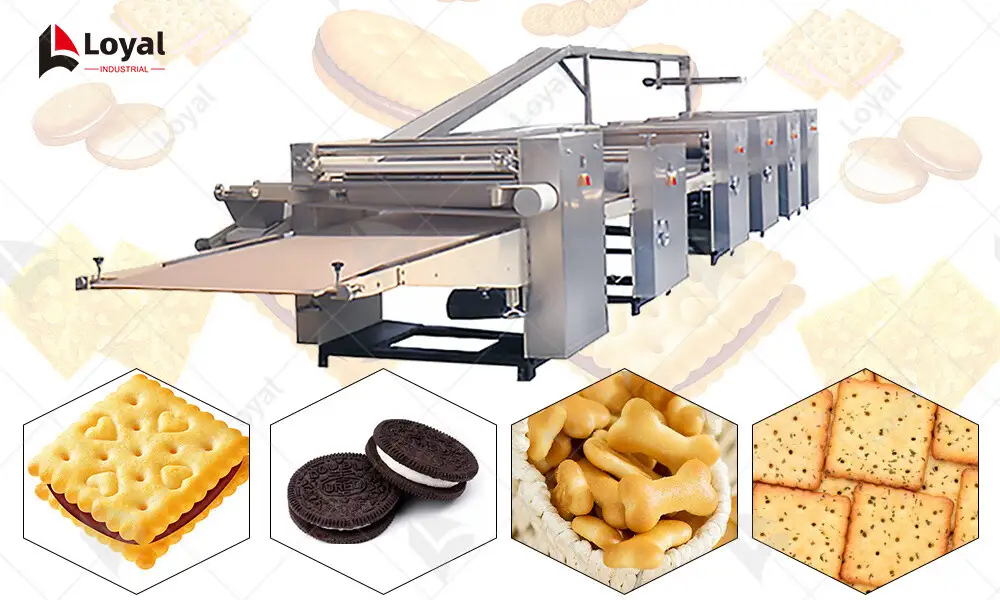
Key Components and Technology
In 2024, the technology behind automatic cookie making machines has advanced significantly, ensuring high efficiency, precision, and consistency in cookie production. Understanding the key components and the technological innovations integrated into these machines is crucial for optimizing production and maintaining quality.
1. Mixing and Dough Preparation Systems
The foundation of any automatic cookie making machine is its mixing and dough preparation system. These systems are designed to precisely measure and mix ingredients, ensuring a consistent dough quality. Advanced models feature automated ingredient feeders, precision mixers, and temperature controls that maintain the optimal conditions for dough preparation.
2. Forming and Shaping Units
Forming and shaping units are integral components that define the final shape and size of the cookies. Technologies such as rotary molding, wire cutting, and depositing systems allow for a wide variety of cookie shapes and sizes. Modern machines often incorporate interchangeable molds and dies, offering flexibility in production and enabling manufacturers to easily switch between different cookie designs.
3. Conveyor and Transport Systems
Conveyor and transport systems play a crucial role in moving the dough through various stages of production. These systems are designed for smooth, continuous operation, minimizing manual intervention and ensuring a steady flow of production. High-quality conveyor belts with adjustable speeds and automated alignment features enhance the efficiency and consistency of cookie production.
4. Baking and Cooking Modules
The baking and cooking modules of an automatic cookie making machine are where the dough is transformed into cookies. These modules are equipped with advanced heating technologies, such as convection, radiation, or infrared heating, to ensure even baking. Precision temperature controls and timers allow for the fine-tuning of the baking process, ensuring that each batch of cookies is baked to perfection.
5. Cooling and Hardening Sections
After baking, cookies need to be properly cooled and hardened before packaging. Cooling and hardening sections in automatic cookie making machines are designed to gradually reduce the temperature of the cookies, preventing thermal shock and ensuring structural integrity. These sections often feature controlled air flow systems and cooling tunnels that efficiently manage the cooling process.
6. Packaging and Handling Equipment
The final stage in the production process involves packaging and handling. Automatic cookie making machines are integrated with packaging equipment that can handle various types of packaging, such as wrapping, bagging, and boxing. Automated handling systems ensure that cookies are carefully packaged without damage, maintaining their quality and extending shelf life.
7. Control Systems and Automation
At the heart of these machines are sophisticated control systems and automation technologies. Modern automatic cookie making machines are equipped with programmable logic controllers (PLCs), touch screen interfaces, and IoT connectivity. These technologies allow for real-time monitoring, data collection, and remote control of the production process, enhancing efficiency and allowing for quick adjustments as needed.
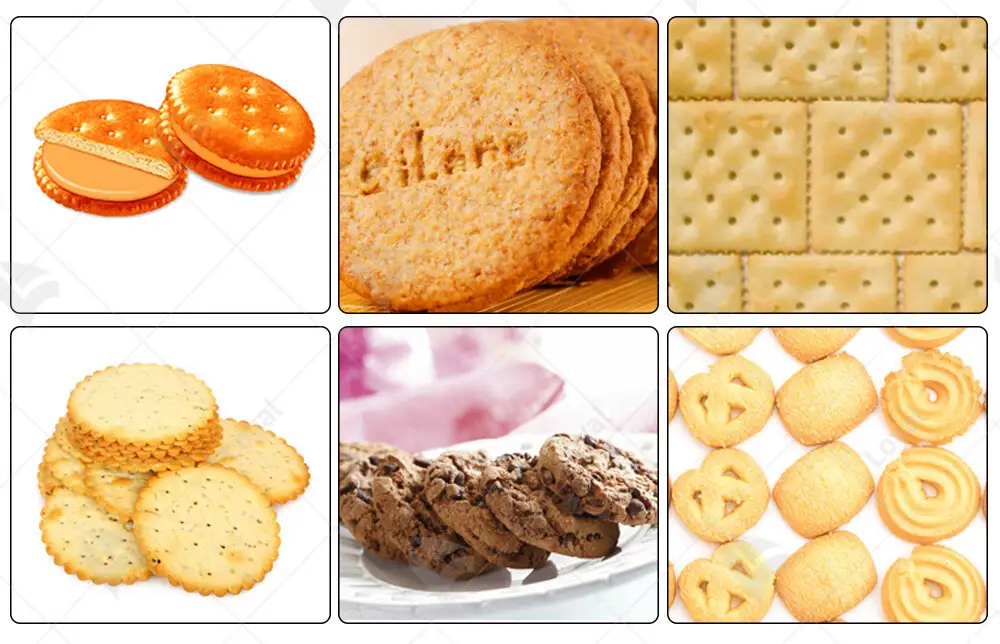
Techniques for Optimizing Production Efficiency
1. Automation and Integration: Utilizing fully automated systems that integrate mixing, forming, baking, cooling, and packaging processes can significantly boost efficiency. This reduces manual intervention, minimizes errors, and ensures a streamlined production flow.
2. Precision Control Systems: Implementing advanced control systems that monitor and adjust parameters in real-time helps maintain consistency in production. These systems can detect and rectify anomalies instantly, ensuring minimal waste and maximum output.
3. Energy Efficiency: Modern automatic cookie making machines are designed to be energy-efficient, utilizing technologies such as regenerative heat systems and low-power consumption motors. This not only reduces operational costs but also supports sustainable production practices.
4. Regular Maintenance: Keeping the machine in top condition through regular maintenance schedules ensures optimal performance. Preventive maintenance reduces downtime and prolongs the machine’s lifespan, contributing to consistent production efficiency.
By mastering these aspects of the production process, manufacturers can achieve unparalleled efficiency and quality with their automatic cookie making machines, setting new standards in the industry for 2024.
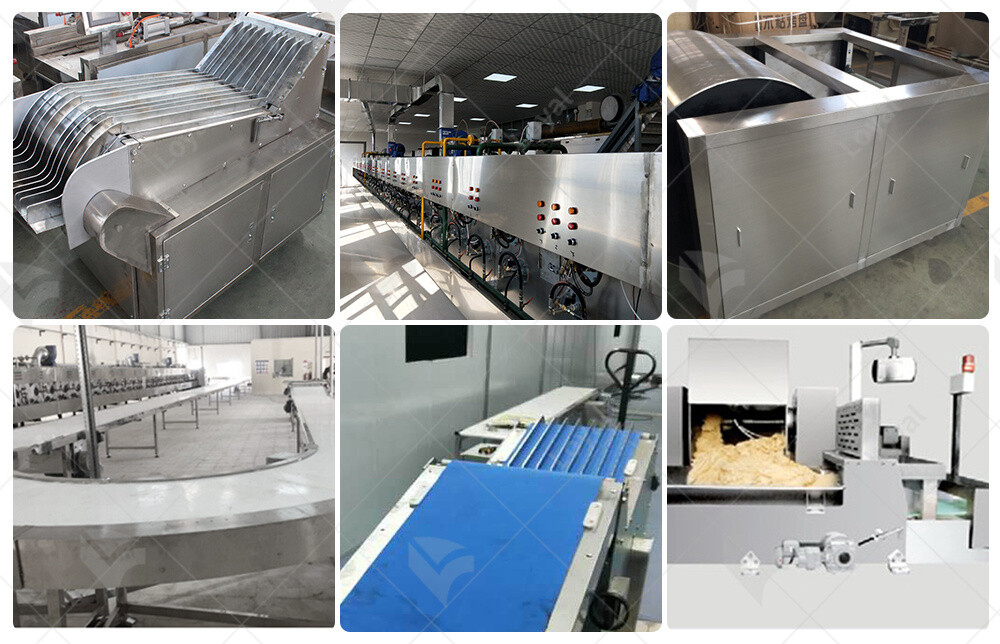
Advantages of Automatic Cookie Making Machines
| 1. Increased Efficiency |
| Automatic cookie making machines streamline the production process, allowing for higher output rates compared to manual methods. These machines can produce large quantities of cookies in a shorter timeframe, enhancing overall efficiency. |
| 2. Consistent Quality |
| With precise automation and control systems, automatic cookie making machines ensure consistent quality in every batch of cookies produced. This consistency is crucial for meeting consumer expectations and maintaining the reputation of the brand. |
| 3. Reduced Labor Costs |
| By automating repetitive tasks such as dough mixing, portioning, and shaping, automatic cookie making machines reduce the need for manual labor. This leads to cost savings associated with labor wages and allows businesses to allocate resources more efficiently. |
| 4. Versatility and Customization |
| Modern automatic cookie making machines offer a high degree of versatility and customization options. They can produce various types of cookies in different shapes, sizes, and flavors, catering to diverse consumer preferences and market demands. |
| 5. Improved Safety and Hygiene |
| Automatic cookie making machines adhere to strict hygiene standards, reducing the risk of contamination and ensuring food safety. Enclosed designs and automated processes minimize direct human contact with the dough and finished products, enhancing overall hygiene levels. |
| 6. Enhanced Productivity |
| With advanced features such as touchscreen interfaces and programmable settings, automatic cookie making machines enable operators to monitor and adjust production parameters easily. This enhances productivity by reducing downtime and optimizing workflow efficiency. |
| 7. Cost-Effectiveness |
| While the initial investment in automatic cookie making machines may be significant, the long-term cost-effectiveness is undeniable. The increased production capacity, consistent quality, and reduced labor costs ultimately lead to higher profitability for businesses. |
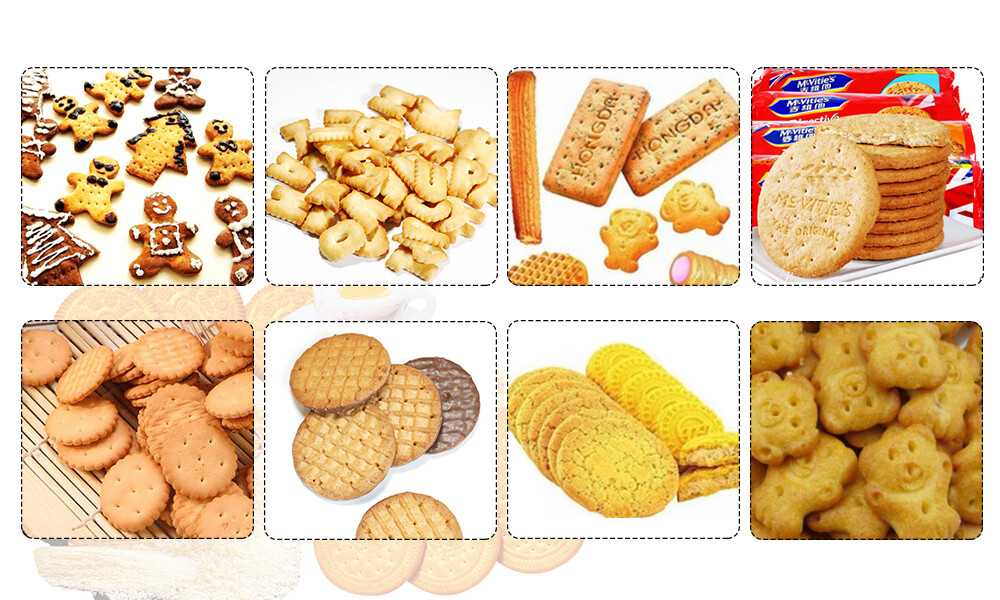
Customization and Flexibility
When it comes to automatic cookie making machines in 2024, customization and flexibility are crucial aspects that manufacturers and producers consider. Let's delve into the customization options and flexibility features offered by these advanced machines.
1. Customizable Settings
Modern automatic cookie making machines come equipped with customizable settings that allow producers to adjust various parameters according to their specific requirements. These settings may include dough consistency, cookie size and shape, baking time and temperature, and icing or decorating options. By tailoring these settings, producers can create cookies that meet their exact specifications and cater to diverse consumer preferences.
2. Modular Design
Many automatic cookie making machines feature a modular design, which enables easy customization and adaptation to different production needs. Components such as depositor heads, shaping rollers, and decorating attachments can be easily interchanged or added to accommodate changes in cookie designs or production volumes. This modular approach enhances flexibility and scalability, allowing producers to quickly respond to market demands and trends.
3. Multi-Functionality
Some advanced automatic cookie making machines offer multi-functionality, allowing producers to create a wide range of cookie types and variations using a single machine. These machines may have interchangeable tooling or attachments that enable the production of different cookie shapes, sizes, textures, and decorations. By consolidating multiple production processes into one machine, producers can optimize space, resources, and efficiency while maximizing product diversity.
4. Programmable Control Systems
Automation and programmable control systems play a key role in enhancing the customization and flexibility of automatic cookie making machines. Producers can program these systems to execute specific production sequences, adjust settings based on recipe requirements, and monitor process parameters in real-time. Programmable control systems offer precision, consistency, and adaptability, ensuring that each batch of cookies meets quality standards and customer expectations.
5. Adaptable Production Lines
In addition to individual machine customization, producers can design adaptable production lines that incorporate multiple automatic cookie making machines and auxiliary equipment. These production lines can be configured and reconfigured to accommodate changes in production volume, product variety, and manufacturing processes. By designing flexible production lines, producers can optimize efficiency, minimize downtime, and maintain agility in response to market dynamics.
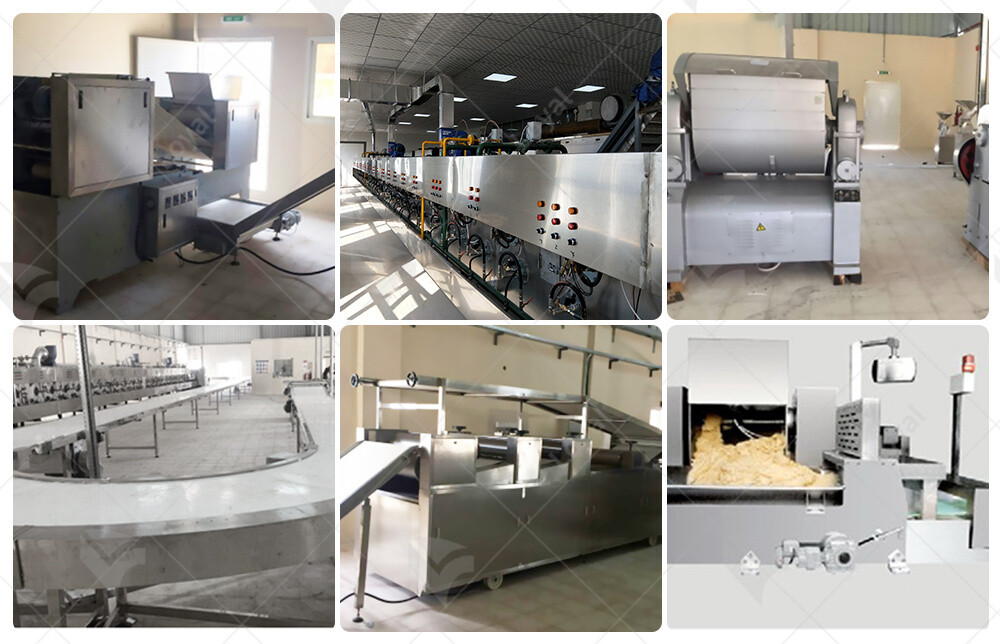
Maintenance and Troubleshooting
Maintaining and troubleshooting an automatic cookie making machine is crucial for ensuring smooth operation and consistent production quality. Let's delve into some key aspects of maintenance and troubleshooting for these machines in 2024.
1. Regular Cleaning and Lubrication
To keep your automatic cookie making machine running smoothly, it's essential to adhere to a regular cleaning and lubrication schedule. This involves removing any accumulated debris, crumbs, or residue from the machine's components and applying lubricants to moving parts to prevent friction and wear.
2. Inspection of Wear and Tear
Regular inspections of the machine's components are necessary to identify any signs of wear and tear. Pay close attention to areas prone to mechanical stress, such as belts, gears, and bearings. Replace worn or damaged parts promptly to prevent breakdowns and ensure optimal performance.
3. Calibration and Adjustment
Over time, the settings and calibration of your automatic cookie making machine may drift, affecting the quality and consistency of the cookies produced. Periodically check and calibrate the machine's settings, including dough thickness, cookie size, and baking temperature, to maintain desired production standards.
4. Troubleshooting Common Issues
Despite regular maintenance, automatic cookie making machines may encounter occasional issues that require troubleshooting. Common problems include uneven dough distribution, misalignment of cutting or shaping components, and inconsistent baking results. Refer to the machine's manual for troubleshooting guidance, and consult with technical support or a qualified technician if necessary.
5. Training and Operator Competence
Ensure that operators responsible for operating and maintaining the automatic cookie making machine receive adequate training and possess the necessary competence. Proper training empowers operators to identify potential issues, perform routine maintenance tasks effectively, and troubleshoot minor problems promptly, reducing downtime and minimizing production disruptions.
6. Documentation and Record-Keeping
Maintain detailed records of maintenance activities, including cleaning schedules, lubrication procedures, inspection reports, and any repairs or adjustments made to the machine. Documentation provides valuable insights into the machine's performance over time, facilitates proactive maintenance planning, and aids in identifying recurring issues that may require further attention.
7. Proactive Maintenance Planning
Implement a proactive maintenance strategy to prevent unexpected breakdowns and optimize the lifespan of your automatic cookie making machine. Schedule regular preventive maintenance tasks based on manufacturer recommendations and historical performance data. Proactive maintenance helps identify potential issues early, allowing for timely intervention and minimizing downtime.
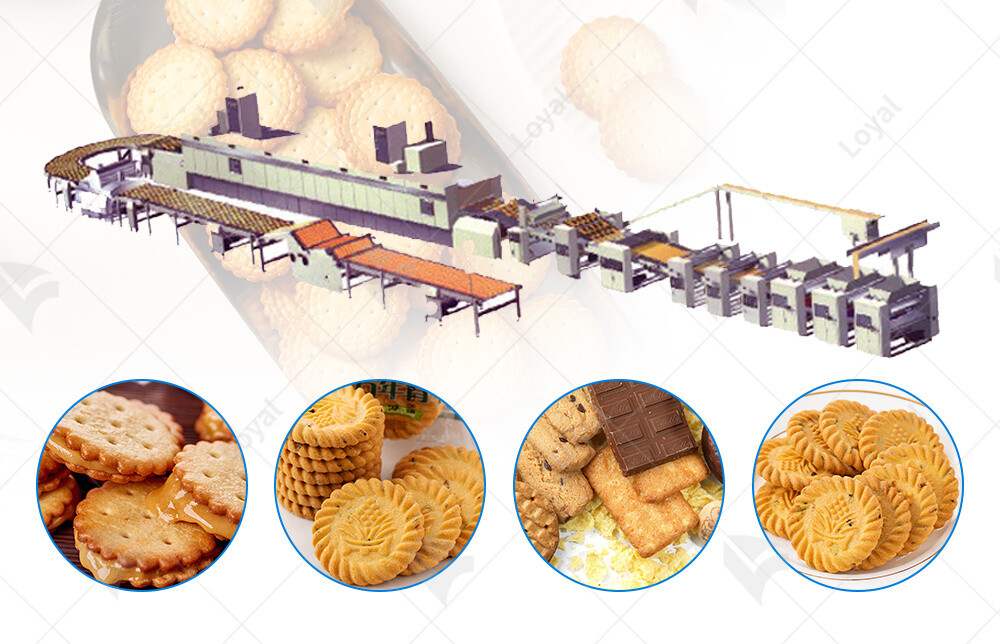
Innovations and Future Trends
In the realm of automatic cookie making machines, innovation is a driving force that shapes the future landscape of the industry. Let's delve into the innovations and future trends anticipated in 2024:
1. Advanced Automation
In 2024, automatic cookie making machines are expected to incorporate even higher levels of automation. This includes enhanced robotic systems for ingredient mixing, dough shaping, and cookie placement onto trays. Advanced sensors and AI algorithms will enable machines to adapt to variations in ingredients and environmental conditions, ensuring consistent quality and efficiency.
2. Customization Capabilities
Cookie makers are increasingly demanding customization options to meet evolving consumer preferences. In response, manufacturers are developing automatic cookie making machines with greater flexibility and customization capabilities. These machines will offer adjustable settings for cookie size, shape, thickness, and texture, allowing producers to create a diverse range of cookie products to cater to niche markets.
3. Integration of IoT Technology
The integration of Internet of Things (IoT) technology into automatic cookie making machines is poised to revolutionize the industry in 2024. IoT-enabled machines will be equipped with sensors and connectivity features that enable real-time monitoring of production processes. This facilitates predictive maintenance, remote troubleshooting, and data-driven insights for optimizing production efficiency and minimizing downtime.
4. Sustainable Design and Practices
In response to growing environmental concerns, automatic cookie making machines will prioritize sustainability in their design and operations. Manufacturers will employ eco-friendly materials, energy-efficient components, and waste-reduction measures to minimize environmental impact. Additionally, advancements in water and energy management systems will contribute to more sustainable cookie production processes.
5. Enhanced Food Safety Measures
Food safety remains a paramount concern in the food industry, driving innovation in automatic cookie making machines. In 2024, machines will incorporate advanced sanitation features, such as self-cleaning mechanisms and UV-C sterilization systems, to ensure the highest levels of hygiene and product safety. Additionally, traceability and quality control systems will be enhanced to track ingredients from source to finished product, bolstering consumer confidence in cookie products.
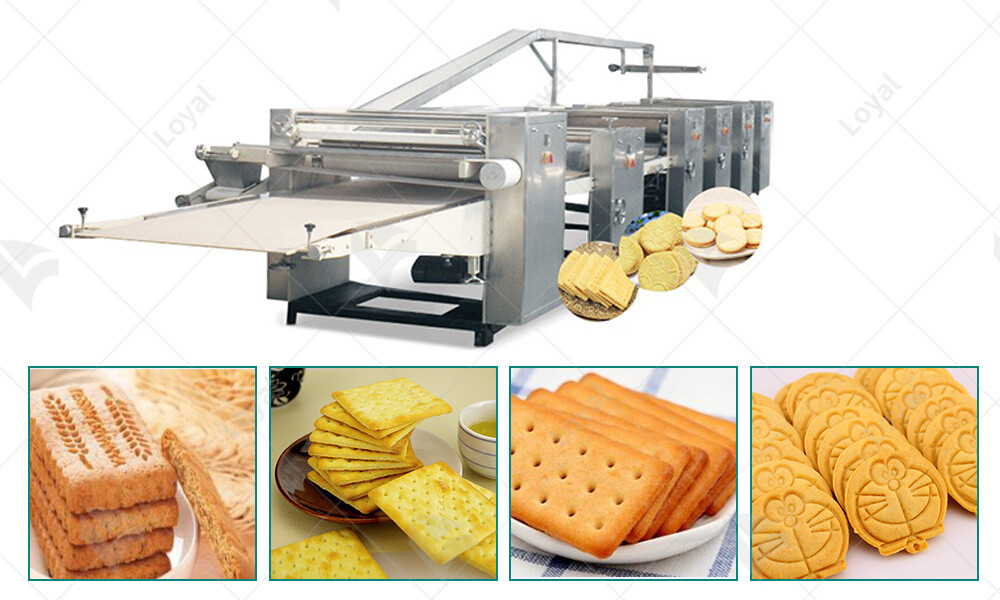
Reference
The following are five authoritative foreign literature websites in the field of Industrial food machinery:
1. Food Engineering Magazine
Website: https://www.foodengineeringmag.com/
2.Food Processing Magazine
Website: https://www.foodprocessing.com/
3.Journal of Food Engineering
Website:https://www.journals.elsevier.com/
4. Food Manufacturing Magazine
Website:https://www.foodmanufacturing.com/
5. International Journal of Food Science & Technology
Website:https://onlinelibrary.wiley.com/












